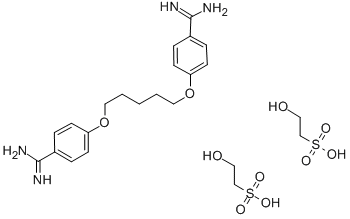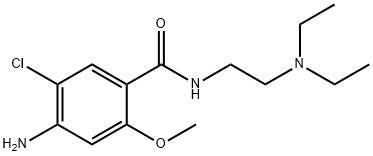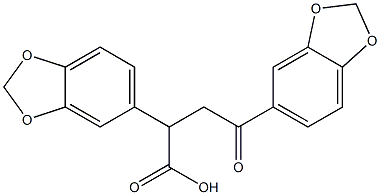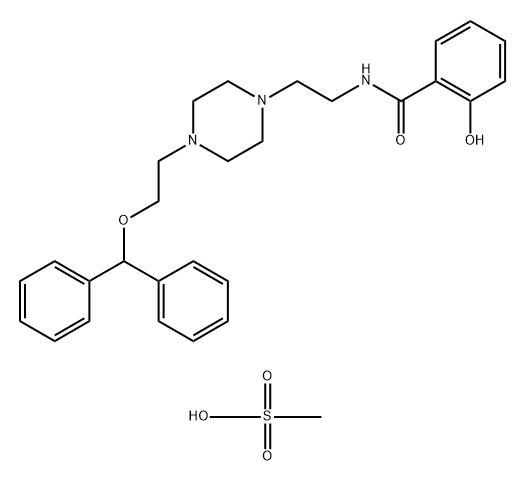Pentamidine isethionate
Synonym(s):1,5-Bis(p-amidinophenoxy)pentane bis(2-hydroxyethanesulfonate salt);4,4′-(Pentamethylenedioxy)dibenzamidine bis(2-hydroxyethanesulfonate);Pentamidine isethionate salt
- CAS NO.:140-64-7
- Empirical Formula: C23H36N4O10S2
- Molecular Weight: 592.68
- MDL number: MFCD00079213
- EINECS: 205-424-1
- SAFETY DATA SHEET (SDS)
- Update Date: 2024-11-06 15:28:16

What is Pentamidine isethionate?
Chemical properties
White or almost white powder or colourless crystals, hygroscopic.
Originator
Nebupent,Fujisawa Healthcare Inc ,USA
The Uses of Pentamidine isethionate
Pentamidine isethionate salt has been used:
- as a positive control for anti-leishmanial, anti-plasmodial and cytotoxic assays
- as a prototypical compound to analyse the inhibitor effect on human ether-a-go-go-related gene (HERG) K+ channel trafficking
- as an anti-leishmanial agent in promastigotes
The Uses of Pentamidine isethionate
Has been widely used as a drug to treat protozoal diseases, such as malaria, amoebic dysentery and trypanosomiasis. It has also been shown to be effective for both prophylaxis of pneumocystic carinii pneumonia (PCC).
The Uses of Pentamidine isethionate
Antiparasitic
What are the applications of Application
Pentamidine isethionate is an NMDA Glu antagonist and NOS1 inhibitor
Definition
ChEBI: An organosulfonate salt obtained by reaction of pentamidine with two equivalents of 2-hydroxyethylsulfonic acid.
Manufacturing Process
2.5 g of p,p'-dicyano-1,5-diphenoxy-pentane (obtained by the interaction of phydroxybenzonitrile and pentamethylene-dibromide in aqueous alkaline solution, melting point 114°C) are dissolved in 15 cc of nitrobenzene and 2.5 cc of absolute ethyl alcohol added. The solution is saturated with dry hydrochloric acid gas at 0°C and allowed to stand for 48 h. It is then diluted with dry ether and the precipitated 1,5-diphenoxypentane, 4,4'di(ethoxycarbonimidoyl) dihydrochlorid is filtered and washed with ether.
4 g of 1,5-diphenoxypentane, 4,4'-di(ethoxycarbonimidoyl) dihydrochloride are mixed with 30 cc. of 6 % ethyl alcoholic ammonia and heated in a closed vessel at 50°C for 5 h. The alcohol is removed and the residual 1,5diphenoxypentane, 4,4'-diamidino dihydrochloride is twice recrystallised fromdilute hydrochloric acid and finally purifled by dissolving in water and precipitating with acetone. Its melts at 236°C, dec.
Pentamidine isetionate salt may be produced by the reaction pentamidine base with isethionic acid.
Therapeutic Function
Antiprotozoal
General Description
Odorless white or almost white crystals or powder. Odor also reported as a slight butyric odor. Very bitter taste. pH (5% aqueous solution) 4.5-6.5.
Air & Water Reactions
Hygroscopic. May be sensitive to prolonged exposure to air. Aqueous solutions deteriorate on storage. Water soluble.
Reactivity Profile
Can decompose on prolonged exposure to light.
Fire Hazard
Flash point data for Pentamidine isethionate are not available; however, Pentamidine isethionate is probably combustible.
Biological Activity
Antimicrobial. Neuroprotective; inhibits constitutive nitric oxide synthase in the brain and acts as a NMDA glutamate receptor antagonist.
Biochem/physiol Actions
Neuroprotective; inhibits constitutive nitric oxide synthase in the brain; NMDA glutamate receptor antagonist.
Clinical Use
4,4’-(Pentamethylenedioxy)dibenzamidine diisethionate(NebuPent, Pentam 300) is a water-soluble crystalline saltthat is stable to light and air. The principal use of pentamidineis for the treatment of pneumonia caused by the opportunisticpathogenic protozoan P. carinii, a frequent secondaryinvader associated with AIDS. The drug may beadministered by slow intravenous infusion or by deep intramuscularinjection for PCP. An aerosol form of pentamidineis used by inhalation for the prevention of PCP inhigh-risk patients infected with HIV who have a previoushistory of PCP infection or a low peripheral CD4+ lymphocytecount.
Pentamidine has been used for the prophylaxis and treatmentof African trypanosomiasis. It also has some value fortreating visceral leishmaniasis. Pentamidine rapidly disappearsfrom the plasma after intravenous injection and is distributedto the tissues, where it is stored for a long period.This property probably contributes to the usefulness of thedrug as a prophylactic agent.
Drug interactions
Potentially hazardous interactions with other drugs
Anti-arrhythmics: increased risk of ventricular
arrhythmias with amiodarone - avoid; possible
increased risk of ventricular arrhythmias with
disopyramide.
Antibacterials: increased risk of ventricular
arrhythmias with delamanid, moxifloxacin and
parenteral erythromycin - avoid with moxifloxacin;
increased risk of ventricular arrhythmias with
parenteral pentamidine and telithromycin.
Antidepressants: increased risk of ventricular
arrhythmias with tricyclics; increased risk of
ventricular arrhythmias with citalopram and
escitalopram - avoid.
Antimalarials: increased risk of ventricular
arrhythmias with piperaquine with artenimol -
avoid.
Antipsychotics: increased risk of ventricular
arrhythmias with amisulpride, droperidol and
phenothiazines - avoid with amisulpride and
droperidol.
Antivirals: increased risk of hypocalcaemia with
parenteral pentamidine and foscarnet; increased risk
of ventricular arrhythmias with saquinavir - avoid.
Cytotoxics: increased risk of ventricular arrhythmias
with vandetanib - avoid.
Ivabradine: increased risk of ventricular arrhythmias.
Metabolism
Extensively hepatically metabolised.
Renal clearance accounts for <5% of the plasma clearance
of pentamidine.
Properties of Pentamidine isethionate
| Melting point: | 188-194 °C(lit.) |
| storage temp. | 2-8°C |
| solubility | Freely soluble in water, sparingly soluble in ethanol (96 per cent), practically insoluble in methylene chloride. |
| form | powder |
| color | White to Off-White |
| Merck | 13,7192 |
| Stability: | Hygroscopic |
| CAS DataBase Reference | 140-64-7(CAS DataBase Reference) |
| EPA Substance Registry System | Ethanesulfonic acid, 2-hydroxy-, compd. with 4,4'-[1,5-pentanediylbis(oxy)]bis[benzenecarboximidamide] (2:1) (140-64-7) |
Safety information for Pentamidine isethionate
| Signal word | Warning |
| Pictogram(s) |
 Exclamation Mark Irritant GHS07 |
| GHS Hazard Statements |
H315:Skin corrosion/irritation H317:Sensitisation, Skin H319:Serious eye damage/eye irritation H335:Specific target organ toxicity, single exposure;Respiratory tract irritation |
| Precautionary Statement Codes |
P280:Wear protective gloves/protective clothing/eye protection/face protection. P305+P351+P338:IF IN EYES: Rinse cautiously with water for several minutes. Remove contact lenses, if present and easy to do. Continuerinsing. |
Computed Descriptors for Pentamidine isethionate
| InChIKey | YBVNFKZSMZGRAD-UHFFFAOYSA-N |
New Products
4-AMINO-TETRAHYDRO-PYRAN-4-CARBOXYLIC ACID HCL 4-(Dimethylamino)tetrahydro-2H-pyran-4-carbonitrile 4-Aminotetrahydropyran-4-carbonitrile Hydrochloride (R)-3-Aminobutanenitrile Hydrochloride 3-((Dimethylamino)methyl)-5-methylhexan-2-one oxalate 1,4-Dioxa-8-azaspiro[4.5]decane 5-Bromo-2-nitropyridine Nimesulide BP Aceclofenac IP/BP/EP Diclofenac Sodium IP/BP/EP/USP Mefenamic Acid IP/BP/EP/USP Ornidazole IP Diclofenac Potassium THOMAIND PAPER PH 2.0 TO 4.5 1 BOX BUFFER CAPSULE PH 9.2 - 10 CAP SODIUM CHLORIDE 0.1N CVS ALLOXAN MONOHYDRATE 98% PLATINUM 0.5% ON 3 MM ALUMINA PELLETS (TYPE 73) LITHIUM AAS SOLUTION 2-Bromo-1-(bromomethyl)-3-chloro-5-nitrobenzene 2-Bromo-3-nitroaniline N-(3-Hydroxypropyl)-N-methylacetamide 3-Bromo-6-chloropyridazine 4-ethyl-3-nitrobenzoic acidRelated products of tetrahydrofuran








You may like
-
 Pentaminide isetionate 98% (HPLC) CAS 140-64-7View Details
Pentaminide isetionate 98% (HPLC) CAS 140-64-7View Details
140-64-7 -
 Pentamidine diisetionate CAS 140-64-7View Details
Pentamidine diisetionate CAS 140-64-7View Details
140-64-7 -
 Pentamidine isethionate CAS 140-64-7View Details
Pentamidine isethionate CAS 140-64-7View Details
140-64-7 -
 Pentamidine isethionate salt CAS 140-64-7View Details
Pentamidine isethionate salt CAS 140-64-7View Details
140-64-7 -
 1823368-42-8 98%View Details
1823368-42-8 98%View Details
1823368-42-8 -
 2-(3-(tert-butyl)phenoxy)-2-methylpropanoic acid 1307449-08-6 98%View Details
2-(3-(tert-butyl)phenoxy)-2-methylpropanoic acid 1307449-08-6 98%View Details
1307449-08-6 -
 Ethyl 3-(furan-2-yl)-3-hydroxypropanoate 25408-95-1 98%View Details
Ethyl 3-(furan-2-yl)-3-hydroxypropanoate 25408-95-1 98%View Details
25408-95-1 -
 Lithium ClavulanateView Details
Lithium ClavulanateView Details
61177-44-4